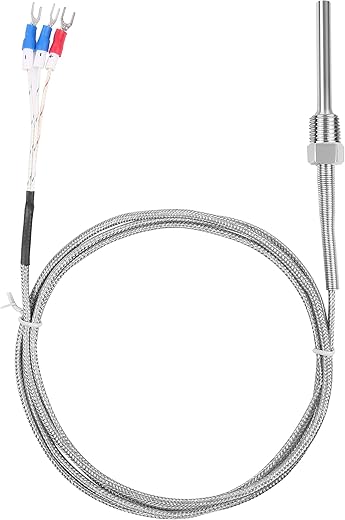







Understanding Quality Probes: A Comprehensive Guide
In the world of product testing and evaluation, the term “quality probe” often surfaces as a critical component in ensuring optimal performance and reliability. But what exactly is a quality probe, and why is it essential? This article will delve into the intricacies of quality probes, exploring their significance, types, and applications across various industries.
What is a Quality Probe?
A quality probe is essentially a tool or instrument used to assess the quality of a product, process, or service. Think of it as a detective, meticulously investigating every nook and cranny to uncover potential flaws or areas for improvement. Quality probes can take many forms, from physical testing instruments to software tools designed to analyze data. Their primary goal? To ensure that products meet established standards before they reach consumers.
The Importance of Quality Probes
Why should companies invest in quality probes? Imagine biting into a piece of fruit only to find it rotten on the inside. Disappointing, right? In the same way, a company that neglects quality testing risks disappointing its customers and tarnishing its reputation. Quality probes help businesses maintain high standards, reduce defects, and ultimately enhance customer satisfaction.
Types of Quality Probes
Quality probes come in various forms, each serving a specific purpose. Here are some common types:
1. Physical Quality Probes
These are tangible instruments used in manufacturing and production environments. Examples include:
– **Calipers**: Used to measure the dimensions of objects.
– **Durometers**: Measure the hardness of materials.
– **Thermometers**: Assess temperature to ensure products are stored under proper conditions.
2. Software Quality Probes
In our increasingly digital world, software quality probes have gained prominence. These tools analyze code and functionality to identify bugs and performance issues. Popular examples include:
– **Unit Testing Frameworks**: Such as JUnit or NUnit, which help in testing individual components of software.
– **Static Code Analysis Tools**: Like SonarQube, which examine code without executing it to find potential vulnerabilities.
3. Process Quality Probes
These probes focus on the methods and procedures used in production. They aim to identify inefficiencies and areas for improvement. Techniques include:
– **Six Sigma**: A methodology that uses data-driven approaches to eliminate defects in processes.
– **Lean Manufacturing**: Focuses on minimizing waste while maximizing productivity.
How Quality Probes Work
The operation of quality probes varies based on their type, but they all share a common methodology. Typically, the process involves:
1. **Setting Standards**: Establishing criteria that products or services must meet.
2. **Conducting Tests**: Utilizing the appropriate probe to assess quality against these standards.
3. **Analyzing Results**: Interpreting data collected from tests to identify patterns, defects, or areas needing improvement.
4. **Implementing Changes**: Adjusting processes or products based on the analysis to enhance quality.
Benefits of Using Quality Probes
Integrating quality probes into production and evaluation processes offers numerous advantages:
– **Enhanced Product Quality**: Consistent testing leads to higher quality products that meet customer expectations.
– **Cost Savings**: By identifying defects early, companies can avoid costly recalls and rework.
– **Improved Efficiency**: Streamlined processes result from identifying and eliminating bottlenecks and inefficiencies.
Challenges in Implementing Quality Probes
While the benefits are clear, implementing quality probes is not without challenges. Some common hurdles include:
– **Resource Allocation**: Quality testing requires time and financial investment.
– **Training Needs**: Staff must be trained on the use of quality probes and the interpretation of results.
– **Resistance to Change**: Employees may resist new processes or tools, fearing disruption to their workflow.
Conclusion
Quality probes play a vital role in maintaining high standards across various industries. By investing in these tools, companies can ensure their products are safe, reliable, and meet consumer expectations. As we’ve explored, the types of quality probes are diverse, and their benefits far outweigh the challenges. In a world where customer satisfaction reigns supreme, quality probes are not just optional; they are essential.
FAQs
1. What industries benefit from quality probes?
Quality probes are utilized across multiple sectors, including manufacturing, software development, food production, and healthcare, among others.
2. How often should quality probes be used?
The frequency of quality probe usage depends on the industry and specific processes. However, regular testing is recommended to ensure ongoing quality assurance.
3. Can small businesses afford quality probes?
Yes, there are various cost-effective quality probes available that can be tailored to fit the budget and needs of small businesses, allowing them to maintain quality without breaking the bank.
